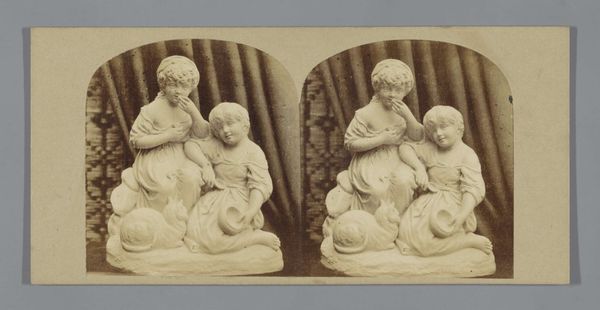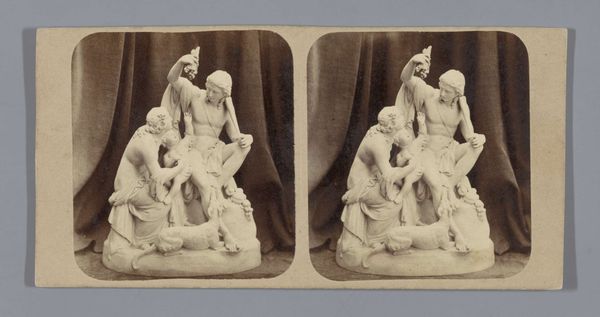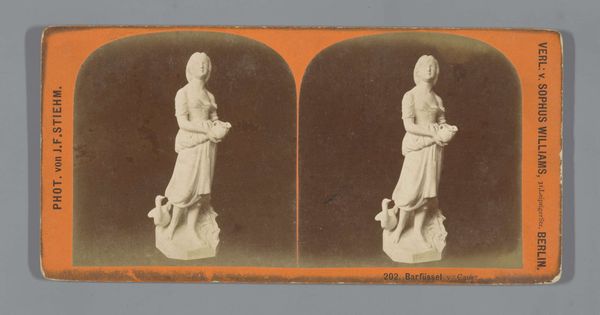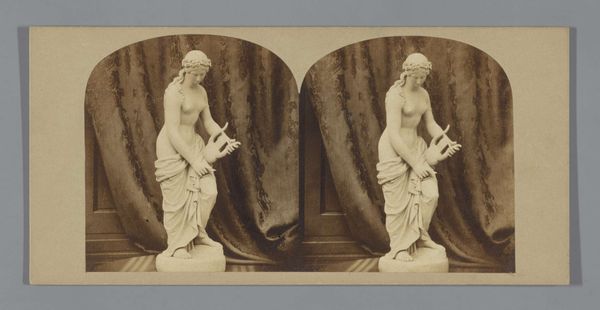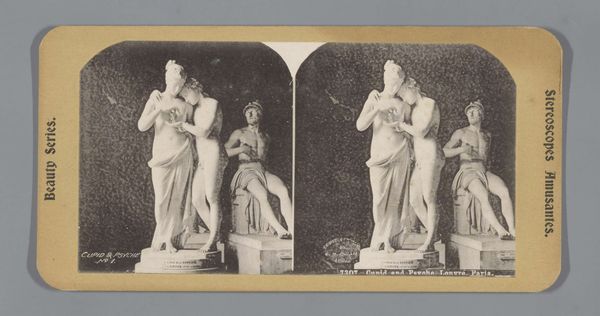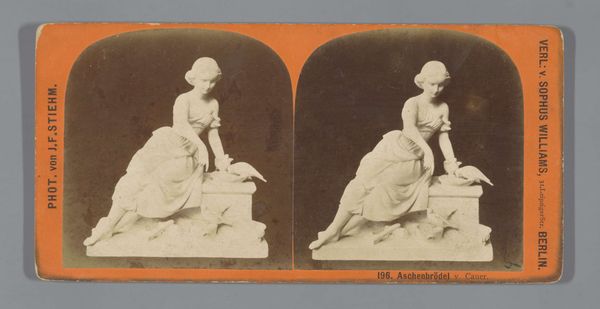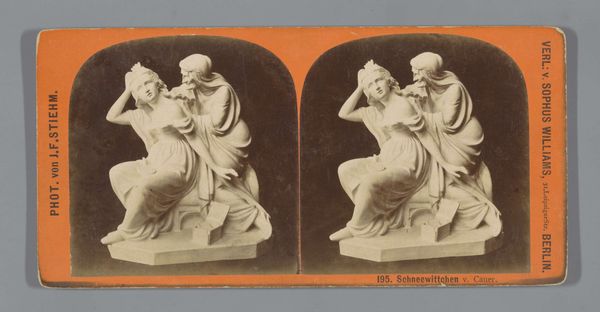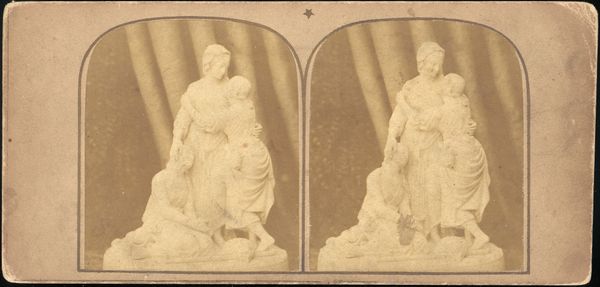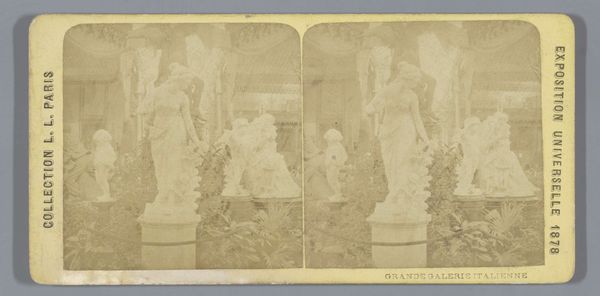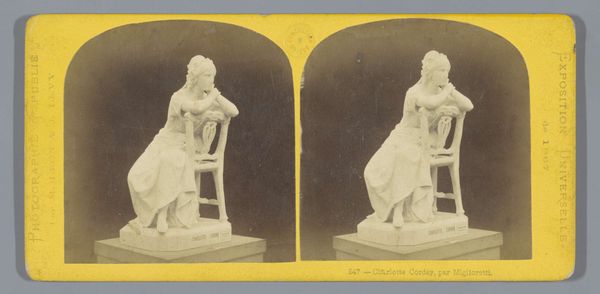
sculpture, marble
#
narrative-art
#
sculpture
#
figuration
#
ancient-mediterranean
#
sculpture
#
marble
Dimensions: height 84 mm, width 174 mm
Copyright: Rijks Museum: Open Domain
Editor: Here we have an intriguing marble sculpture, "Sculptuur van twee vrouwen die Mozes in de Nijl vinden", or "Sculpture of Two Women Finding Moses in the Nile," dating back to around 1855-1880 by Charles E. Goodman. The figures emerge with an arresting clarity, all swathed in white. I find myself curious, though… what narrative layers do you perceive here? Curator: Ah, what a marvelous visual distillation of a rich, resonant narrative! The river itself serves as an ancient symbol, does it not? Birth, rebirth, cleansing… a flowing boundary between worlds, or between life and death. The sculpture locks us into that potent moment of rescue – the finding. Consider what it *doesn’t* show us: the desperation of Moses's mother, the fear of discovery, the Pharaoh’s edict… instead it offers the tranquil acceptance of salvation. It's a memory re-enactment; a powerful representation that pulls from shared historical understanding to deepen the viewer's connection with both salvation, birth, and the symbol of life found in water. Editor: That’s fascinating! I hadn’t considered the… symbolic weight of the river so directly. I focused more on the serenity of the figures' postures. Is that serenity perhaps… misleading? Curator: Perhaps! Remember, symbols often hold multiple, sometimes contradictory, layers. The calm surface belies a churning history, a precarious situation. Does that tension create a richer, more resonant experience for us? Editor: I think it absolutely does. Seeing it as a serene snapshot sells it short. Thinking about all those underlying anxieties – it unlocks a deeper appreciation. Thanks for sharing this perspective! Curator: My pleasure! It's these shared readings of familiar stories through a visual language that keeps the cultural memory alive and evolving, isn’t it?
Comments
No comments
Be the first to comment and join the conversation on the ultimate creative platform.
